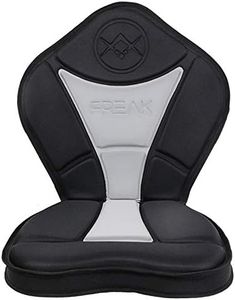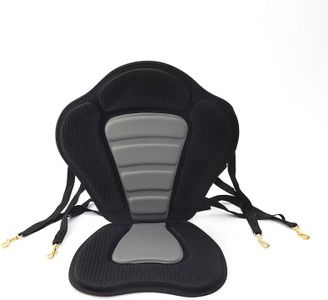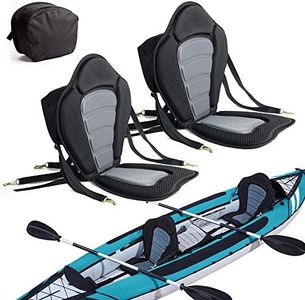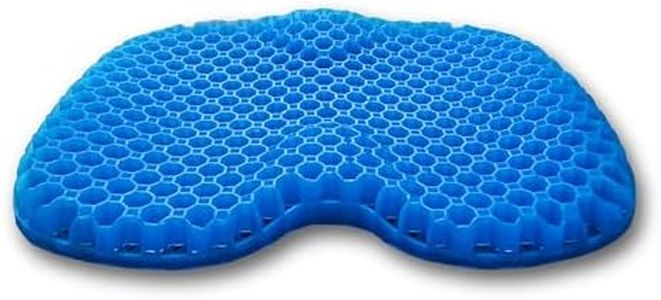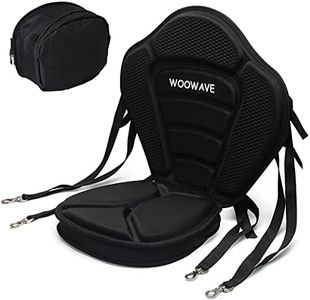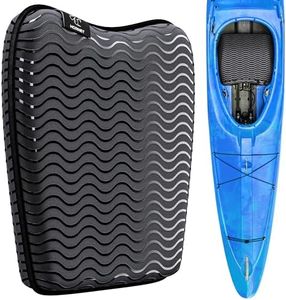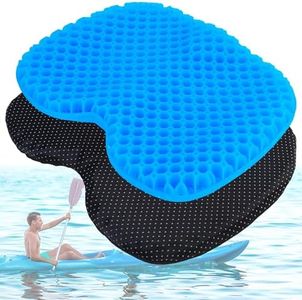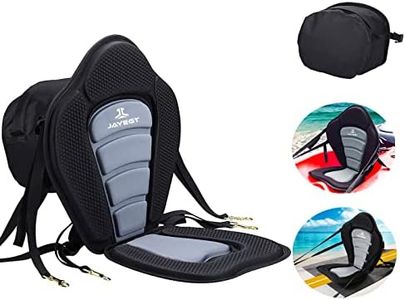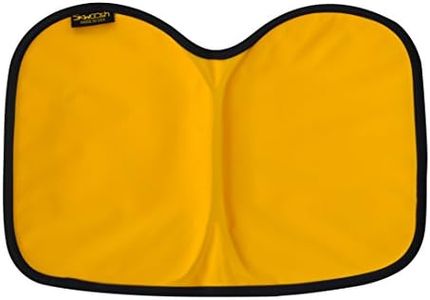We Use CookiesWe use cookies to enhance the security, performance,
functionality and for analytical and promotional activities. By continuing to browse this site you
are agreeing to our privacy policy
10 Best Kayak Seats
From leading brands and best sellers available on the web.By clicking on a link to a third party's website, log data is shared with that third party.
Buying Guide for the Best Kayak Seats
Choosing the right kayak seat can make a world of difference in your comfort, performance, and enjoyment on the water. Whether you use your kayak for long adventures, short trips, fishing, or just paddling around, having the right seat ensures you stay comfortable and supported for as long as you need. The main goal is to match the seat’s features with your paddling habits and personal preferences, turning every trip out on the water into a more enjoyable experience.Padding ThicknessPadding thickness refers to how much cushion is built into the seat. This is important for staying comfortable, especially during long paddling sessions, as more cushioning can reduce pressure points and soreness. Thinner padding is best suited for short trips and those who want the closest contact with the kayak for better control. Medium padding strikes a balance for all-purpose use, providing comfort without feeling bulky. Thick padding is great for long journeys or anyone sensitive to hard surfaces. When choosing, think about how long you sit in your kayak at a time and whether comfort or direct control is more important for your adventures.
Backrest Height and SupportBackrest height determines how much of your back the seat supports. Lower backrests provide more freedom for upper body movement, which is ideal for active paddling or sports like whitewater kayaking. Higher backrests offer greater support, making them a good choice for touring or fishing, where you spend more time sitting still. Consider your usual paddling style: active paddlers might prefer a lower, easy-to-move-backrest, while those prioritizing comfort and relaxing on the water should look for a taller, well-padded backrest.
AdjustabilityAdjustability refers to the ability to change the position or angle of the seat or backrest. This is important for finding a personalized fit and comfort throughout your trip. Some seats offer adjustable straps or ratchets to modify the tilt or firmness of the backrest, while others stay fixed in place. If you kayak for long periods or share your kayak between people, adjustable seats let you tweak your setup for each paddling session. Those who stick to the same activities or prefer simplicity may be happy with a fixed seat.
Material and DurabilityThe materials used in the seat cover and padding affect how long it will last, its resistance to water, UV rays, and general toughness. Seats made with high-quality marine-grade fabric and corrosion-resistant hardware will last longer, especially in harsh conditions. Basic nylon or polyester works for occasional use but may wear out sooner or absorb water. Consider how often and where you paddle: frequent or ocean paddlers should prioritize durable, fast-drying materials; casual kayakers in calm waters can choose lighter, less expensive options.
Attachment SystemThe attachment system is how the seat is fixed to your kayak. Good attachment is important for safety and preventing the seat from shifting during use. Most systems use straps with clips or buckles. More straps generally mean a more secure fit, which is especially important for rough waters or frequent movements. If you paddle in calm, flat conditions, a simpler system may be sufficient. Make sure your kayak has the right anchor points for the seat you choose. Always verify compatibility for easy installation and security.
VentilationVentilation refers to how well the seat allows air to pass through, which can reduce sweating and increase comfort in warm weather. Mesh panels or ventilated foam help keep your back cool. If you paddle mostly in hot climates or tend to sweat, look for seats that mention breathable materials. In cooler climates, ventilation is less critical, though it can still add a level of comfort for longer sessions.
